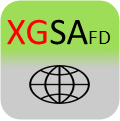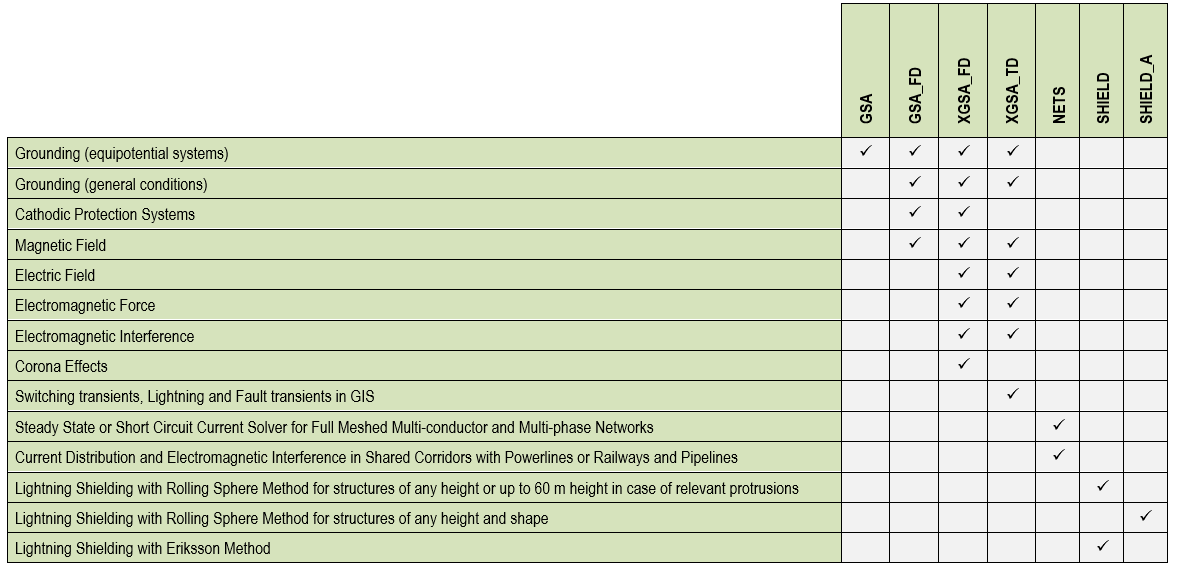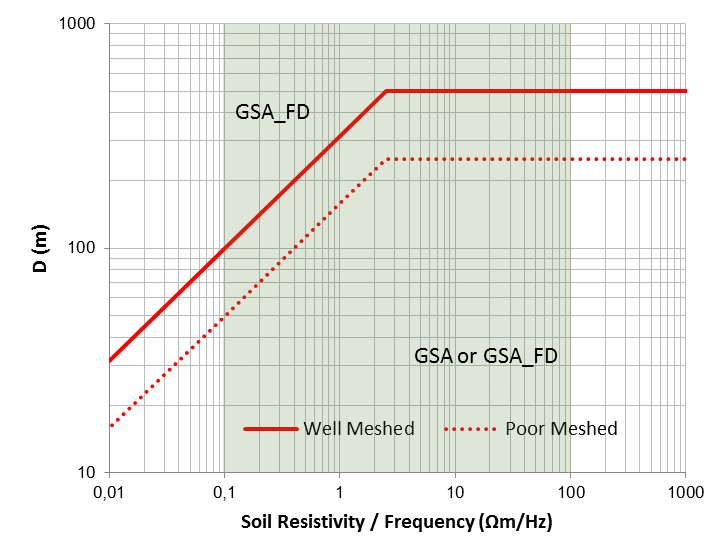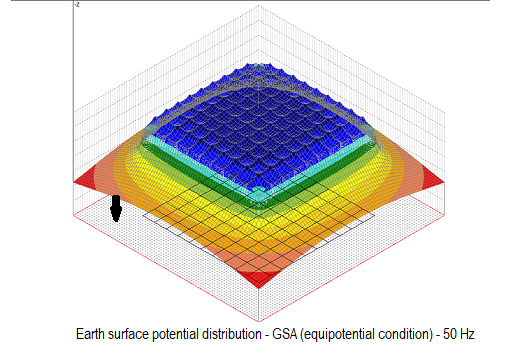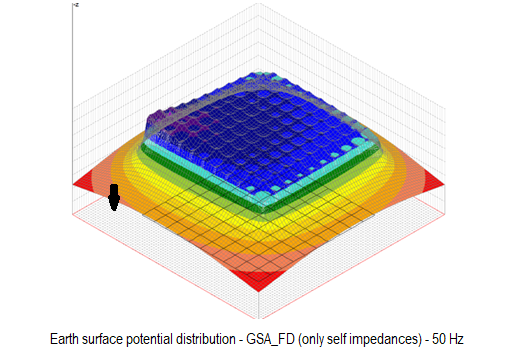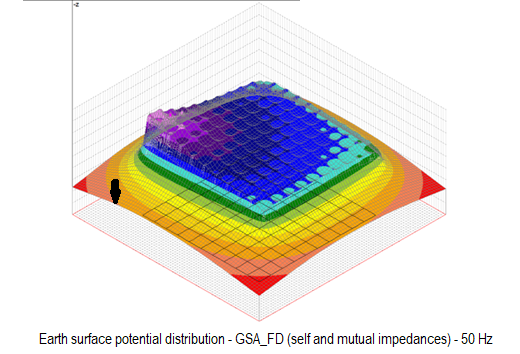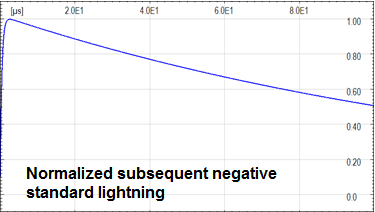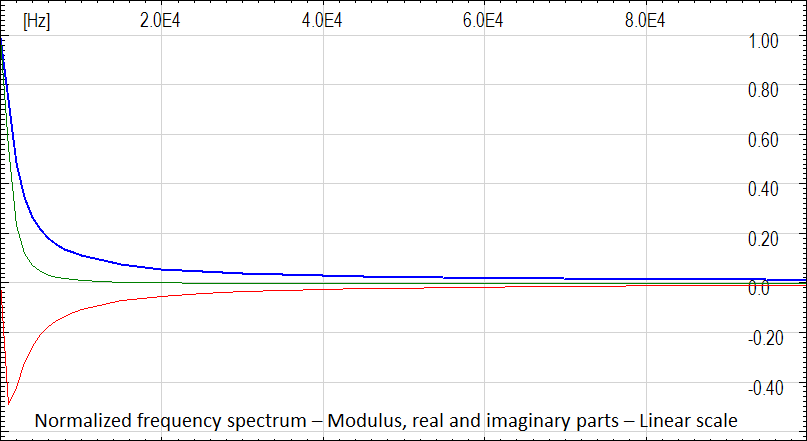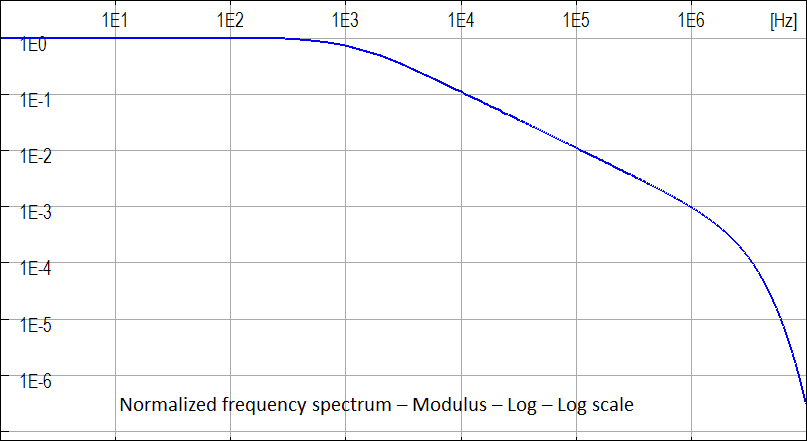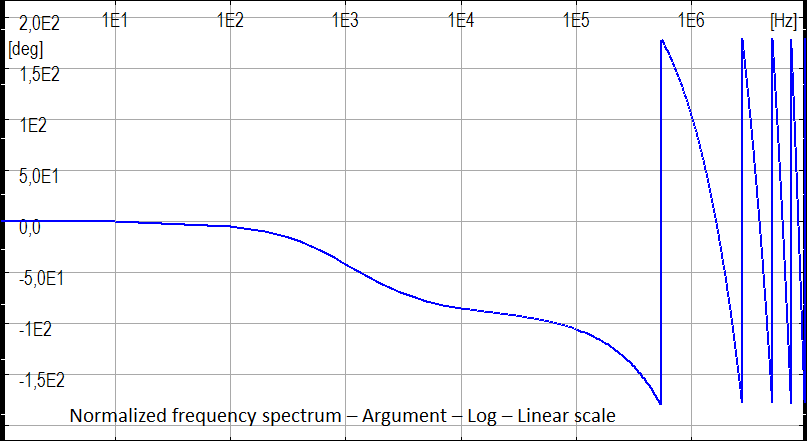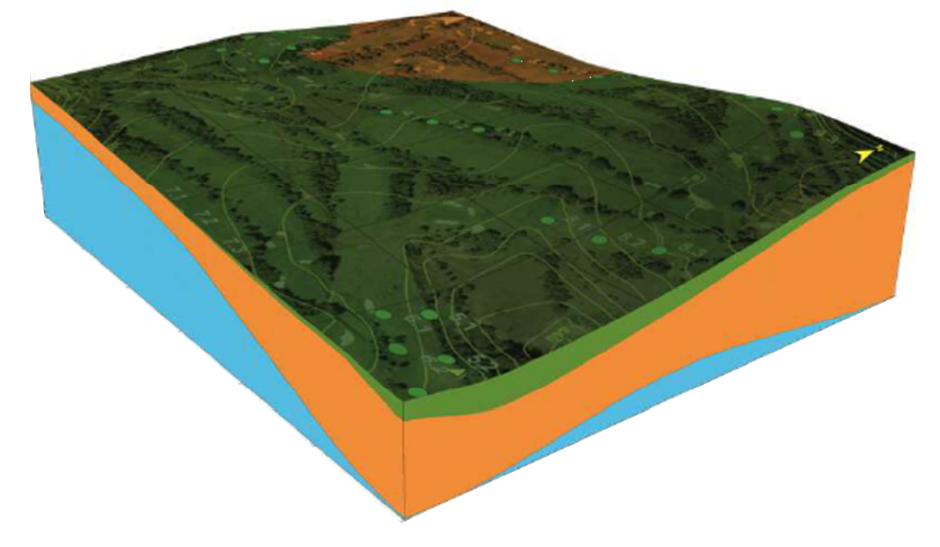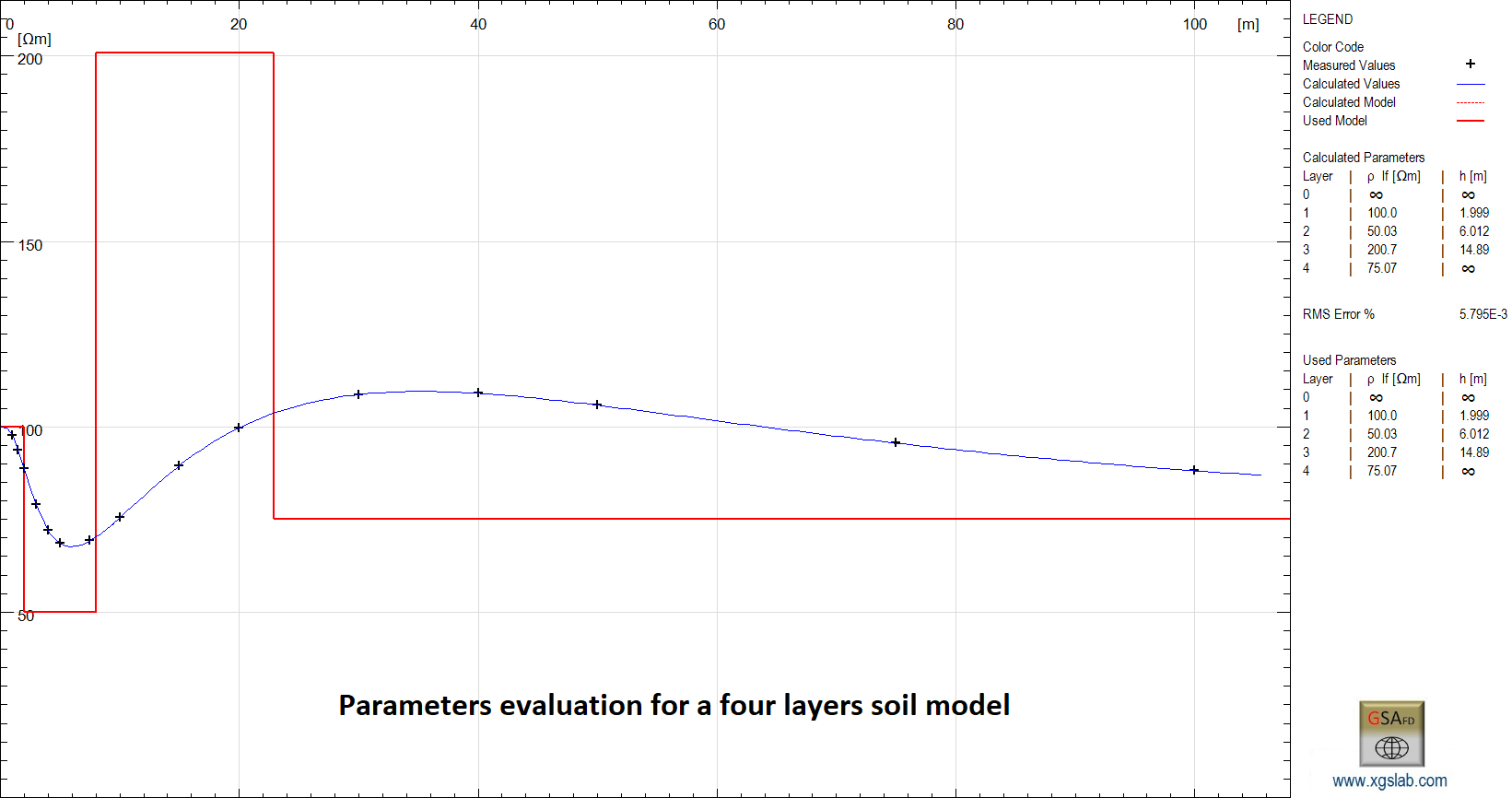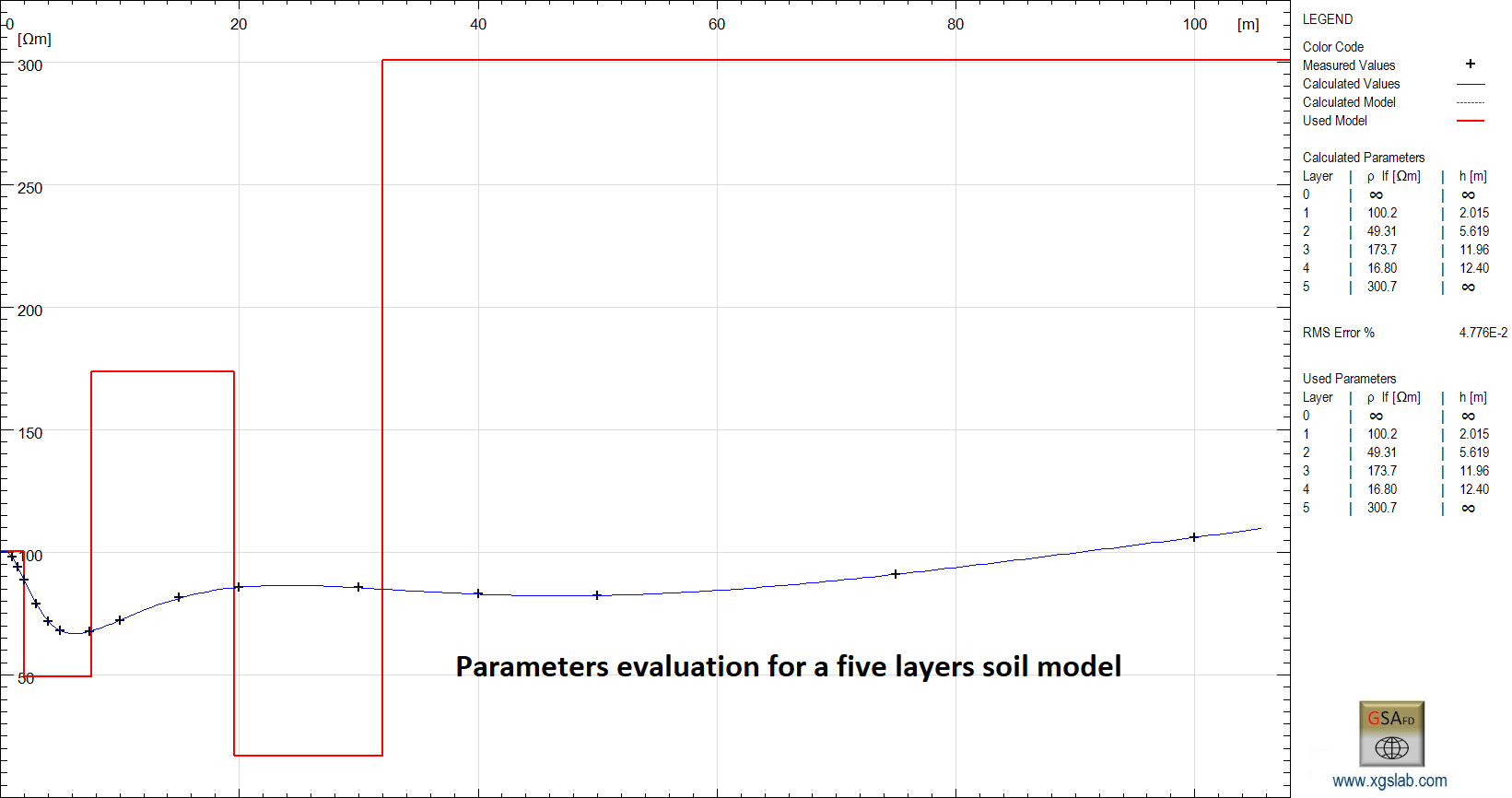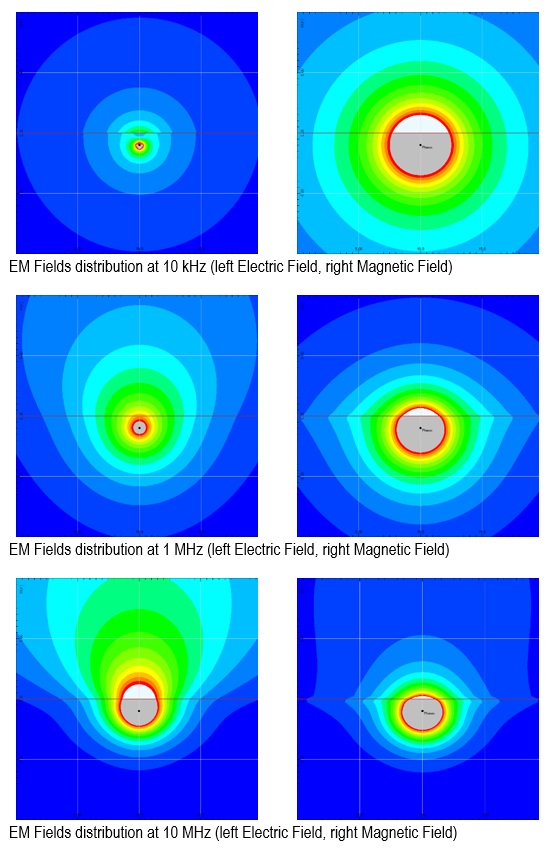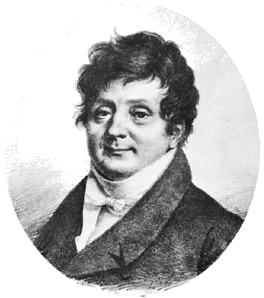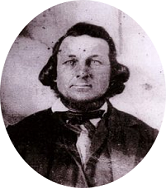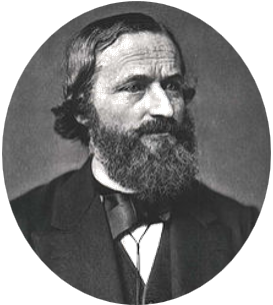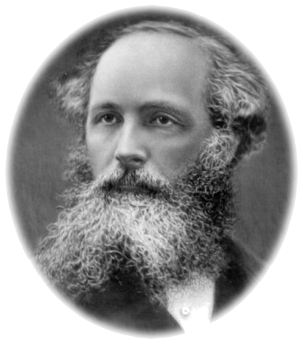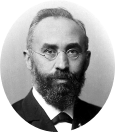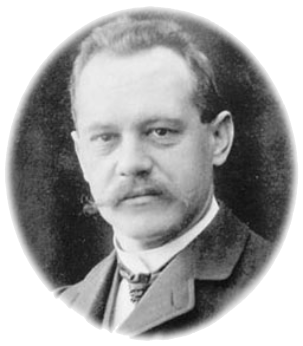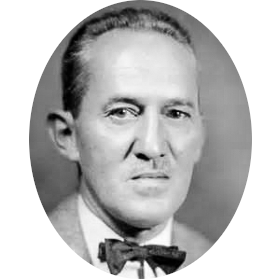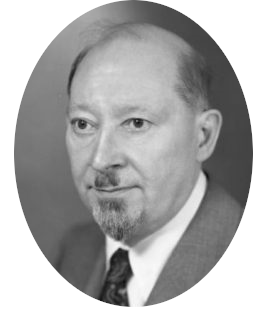
SCIENCE FOR ENGINEERING
THE STATE OF THE ART OF THE ELECTROMAGNETIC SIMULATION FOR POWER SYSTEMS, GROUNDING, INTERFERENCE AND LIGHTNING
ELECTROMAGNETIC SIMULATION FOR POWER SYSTEMS, GROUNDING, INTERFERENCE AND LIGHTNING
Are you looking for the most advanced and accurate electromagnetic simulation software for power systems, grounding, interference, and lightning analysis?
Look no further than XGSLab. Our software, powered by state-of-the-art algorithms, provides engineers and researchers with the tools they need to design and analyze electromagnetic fields with precision and efficiency. Our user-friendly interface makes it easy to simulate and analyze a wide range of applications, including power systems, grounding, interference and lightning analysis. Optimize your electromagnetic design process and get the results you need with XGSLab, the industry leader in electromagnetic simulation software.
XGSLab stands for eXtended Grounding Software Laboratory.
XGSLab (or shortly XGS) has been chosen by many Universities, Utilities and top Electrical Engineering firms in the whole World.
Strength points
- SCIENTIFIC: based on electromagnetic fields theory and in particular in Maxwell Equations and Sommerfeld Integrals
- EASY: a program with an intuitive interface. Very easy even for beginners. Expert users in competitive tools can use XGS right away
- WORLDWIDE: it takes into account International (IEC), USA (IEEE) and European (EN) standards
- VALIDATED: accuracy validated since 1990 by comparison with analytical cases, published researches, field measures and similar programs
- COMPLETE: a complete virtual laboratory for electromagnetic simulation of Power Systems, Grounding, Interference and Lightning
- ADVANCED: based on full-wave PEEC model and suitable for general applications, in a wide frequency range, with arbitrary conductor arrangements and many soil models including multilayer and multizone. Available in the frequency and time domain
- POWERFUL: a powerful code that uses parallel computing, advanced math libraries and OpenGL vector graphics
- OPEN: frequency dependent self and mutual impedances can be exported to EMTP® or ATP® for dynamic behavior studies. Layout data can be imported / exported from / to AutoCAD®. Numerical output can be read by MATLAB®, EXCEL®, and GOOGLE EARTH®
Modules
XGS includes the modules:
- GSA (Grounding System Analysis)
- GSA_FD (Grounding System Analysis in the Frequency Domain)
- XGSA_FD (Over and Underground System Analysis in the Frequency Domain)
- XGSA_TD (Over and Underground System Analysis in the Time Domain)
- NETS (Network Solver)
- SHIELD (Lightning Shielding)
- SHIELD_A (Lightning Shielding Advanced)
The modules GSA, GSA_FD, XGSA_FD and XGSA_TD are based on the electromagnetic field theory and include the following auxiliary tools:
- SRA (Soil Resistivity Analysis)
- SA (soil resistivity Seasonal Analysis)
- FA (Fourier Analysis direct / inverse) (for XGSA_TD only)
The application field of modules GSA, GSA_FD, XGSA_FD and XGSA_TD is wide because they are based on the PEEC (Partial Element Equivalent Circuit) method, a numerical method for general applications powerful and flexible, a scientific method but perfectly suitable for engineering purposes. This method allows the analysis of complex scenarios including external parameters such as voltages, currents and impedances. The implemented PEEC method solves the Maxwell equations in full wave conditions taking into account the Green functions for propagation, the Sommerfeld integrals for the earth reaction, the Jefimenko equations for electric and magnetic fields and moving from the frequency to the time domain by means the Fourier transforms.
These four modules can import data from “dxf” files, and also export data and results in “dxf” files with a full interactivity with CAD tools.
Moreover results can be also exported as “kml or kmz” files and then displayed in Google Earth®.
The module NETS is based on the phase components method and graphs theory and integrates specific routines for the calculation of the parameters of lines, cables and transformers.
The modules SHIELD and SHIELD_A are based on a full 3D geometrical and graphical model and consider the most diffused methods used for the lightning shielding design (Rolling Sphere and Eriksson Methods).
The available calculation options depend on module and license profile. For details on XGS profiles it is advisable to refer to the document “PRICE LIST”.
All modules are integrated in an “all in one” package and provide professional numerical and graphical output useful to investigate any electromagnetic greatness.
All algorithms implemented in XGS are highly efficient in terms of computation speed and have been validated and tested by many Customers in the world.
XGS is easy to use by engineers who need not to be necessarily experts in the specific field, and moreover accurate, stable and fast.
Everything possible has been done to enhance user friendliness and increase productivity to this powerful tool.
The XGS modules can be grouped according to specific applications as in the following.
MODULES FOR POWER SYSTEM ANALYSIS
XGS includes the following module specifically developed for power system analysis:
- NETS: this module can be used for analysis of multi-conductor and multi-phase full meshed networks also in cases of multiple connection to earth (when the sequence components method cannot be applied) and is commonly used for the evaluation of current distribution in fault and steady state conditions in cables and power lines, including the evaluation of current along screens, armors and overhead earth wires
MODULES FOR GROUNDING AND EARTHING SYSTEM ANALYSIS
XGS includes the following modules specifically developed for grounding and earthing system analysis:
- GSA: this module can be used for analysis of underground systems at low frequency and is commonly used for small and medium size plants like substations or tower footing
- GSA_FD: this module can be used for advanced analysis of underground systems in the frequency domain from DC to about 100 MHz and is commonly used for medium and large systems size like substations, photovoltaic plants or wind plants, for cathodic protection and anode bed analysis or for calculations at high frequency
- NETS: this module can be used for the evaluation of fault current distribution and and is commonly used for the split factor calculation in general conditions
MODULES FOR ELECTROMAGNETIC INTERFERENCE AND FIELDS ANALYSIS
XGS includes the following modules specifically developed for electromagnetic and fields analysis:
- GSA_FD: this module can be used for advanced electromagnetic interference analysis of underground systems in the frequency domain from DC to about 100 MHz and is commonly used for the evaluation of interference between power cables and pipelines
- XGSA_FD: this module can be used for advanced electromagnetic interference and fields analysis of aboveground and underground systems in the frequency domain from DC to about 100 MHz and is commonly used for the evaluation of interference between power lines or cables and pipelines or telecommunication systems. This module can also calculate the electromagnetic force on conductors
- XGSA_TD: this module can be used for advanced electromagnetic interference and fields analysis of aboveground and underground systems in the time domain taking into account transients with maximum bandwidth up to about 100 MHz and is commonly used for the evaluation of interference in transient conditions. This module can also calculate the electromagnetic force on conductors
- NETS: this module can be used for electromagnetic interference analysis of aboveground and underground systems at power frequency, and is commonly used for the evaluation of interference between power lines or cables or railways and pipelines
MODULES FOR LIGHTNING SYSTEM ANALYSIS
XGS includes the following modules specifically developed for lightning system analysis:
- XGSA_TD: this module can be used for advanced electromagnetic interference and fields analysis of aboveground and underground systems in the time domain taking into account transients with maximum bandwidth up to about 100 MHz and is commonly used for the evaluation of lightning or transient effects. This module can also calculate the electromagnetic force on conductors
- SHIELD: this module can be used for the lightning shielding design using the Rolling Sphere or Eriksson methods and can be used for the evaluation of the protection against direct lightning strokes of structures of any height or up to 60 m height in case of relevant protrusions. This module has been developed for lightning engineers, and can be used for all types of buildings, substations or industrial plants
- SHIELD_A: this module can be used for the advanced lightning shielding design using the Rolling Sphere method and can be used for the evaluation of the protection against direct lightning strokes of structures of any height and shape. This module has been developed mainly for lightning specialists, and in particular for structures very tall and with relevant protrusions, like for instance wind towers
Modules GSA, GSA_FD, XGSA_FD and XGSA_TD include the tools SRA and SA for soil resistivity analysis, soil resistivity seasonal analysis and multilayer soil modelling starting from soil resistivity measurements, soil parameters and local climatic conditions.
Module XGSA_TD includes the tool FA for direct and inverse Fourier transforms in order to move from the frequency to time domain and vice versa.
Applications of the different modules
The following table summarizes the main applications of GSA, GSA_FD and XGSA_FD.
| Application | GSA | GSA_FD | XGSA_FD |
| Grounding (equipotential systems) | Yes | Yes | Yes |
| Grounding (general conditions) | Yes | Yes | |
| Cathodic Protection Systems | Yes | Yes | |
| Magnetic Field | Yes | Yes | |
| Electric Field | Yes | ||
| Electromagnetic Interferences | Yes | Yes | |
| Fault Current Distribution | Yes | ||
| Corona Effects |
Yes |
XGSA_TD can be applied in order to analyse current and potential distribution in the time domain on underground and/or overhead conductors energized by means of current or voltage transient. Moreover, XGSA_TD can calculate the distributions of earth potentials and electric and magnetic fields in the time domain.
NETS is a tool based on circuit theory and then it is completely different form the other modules XGSLab modules based on the electromagnetic fields theory.
NETS can solve full meshed multi-conductor and multi-phase networks composed of multi-port cells connected by means of multi-port buses.
NETS can calculate potentials and currents in all ports in steady state or fault conditions and in particular can be used for the calculation of the fault current distribution in power networks.
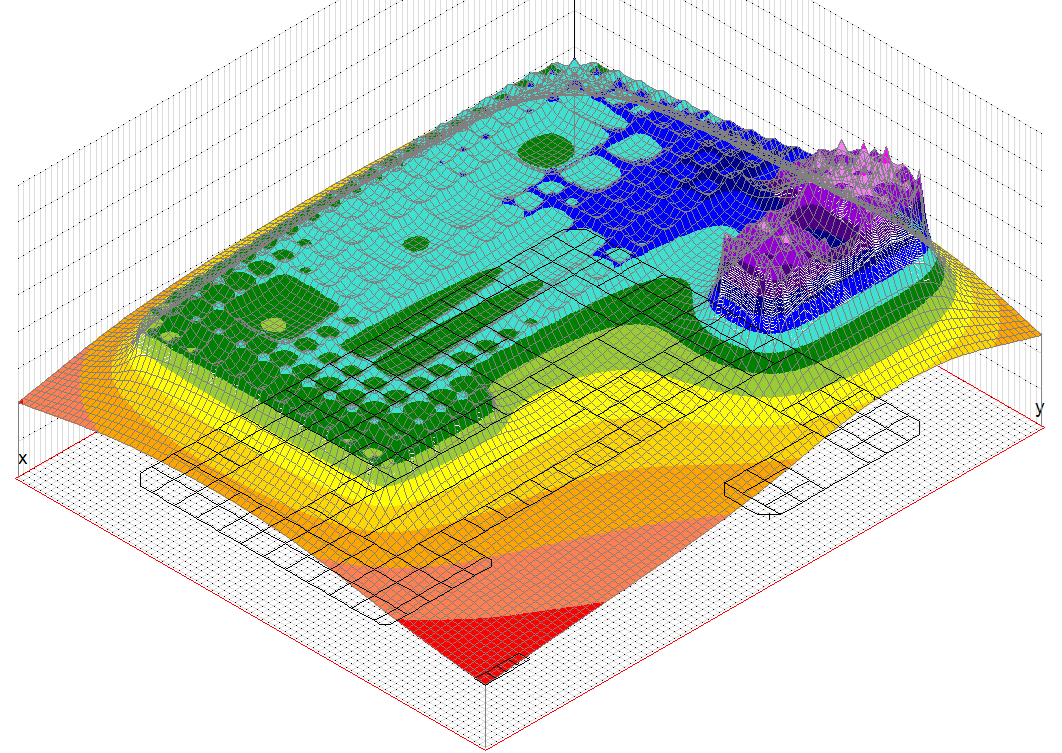 |
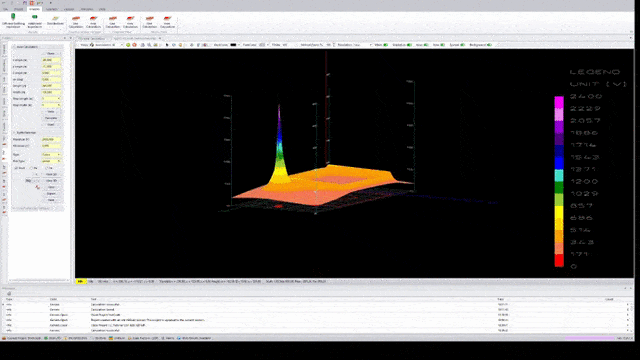 |
XGSA_TD

XGSA_TD is a powerful module which extends the XGSA_FD application field to the time domain.
Comparing GSA to GSA_FD
The following table summarizes the main assumptions on which GSA and GSA_FD module are based.
| Aspects taken into account | GSA | GSA_FD |
| Resistive coupling | Yes | Yes |
| Capacitive coupling | No | Yes |
| Self Impedance | No | Yes |
| Mutual Impedance | No | Yes |
| Soil parameters | ρ | ρ, ε = f(ω) |
| Propagation law | 1/r | e-ϒr/r |
The following diagram represents the application domain of the two modules. The highlighted central area indicates the usual condition at power frequency.
The diagram has been obtained from a parametric analysis using square well-meshed copper grids energized with a current injected in a corner. The analysed parameters were the grid diagonal “D”, the soil resistivity and the frequency.
In its application dominion as defined by the red solid line, the error made by GSA in the GPR and touch voltages calculation is lower than about 10%.
Application domain of GSA and GSA_FD
In practice, in case of well-meshed grids, application limits of GSA can be defined as a function of the wavelength of the electromagnetic field in the earth as follows:
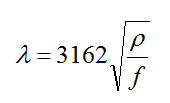
where λ (m) = wavelength, ρ (Ωm) = soil resistivity and f (Hz) = frequency.
The previous diagram indicates that GSA can be used if “D < λ/10”.
This result is in agreement with the simultaneity concept of Albert Einstein.
GSA also requires “D < 500 m” as reasonable limit.
The application limits will be lower if the grid shape is not regular, if the meshes are sparse and if the grid is made of steel or other high resistivity metal. In all these cases, the limit related to poor-meshed grids as defined by the red dashed line should be considered.
The following three figures show the earth surface potential distribution calculated by applying GSA and GSA_FD to a 100 m x 100 m grid with the same injected current, the same frequency (50 Hz), the same injection point (marked with arrow) and the same soil model.
The qualitative difference between results is evident. GPR and impedance to earth tend to grow whether self impedance and mutual impedance are taken into account. High frequency or low soil resistivity can make this difference even more evident.
Of course, a difference in the earth surface potential distribution corresponds to a difference in touch and step voltage distribution.
In brief, in grounding system analysis at power frequency, GSA can be used in many practical situations but it tends to underestimate the results if the grid size is greater than one tenth of the wavelength of the electromagnetic field, while GSA_FD may be applied in all conditions.
After these conclusions a question could arise: Why not just GSA_FD?
The answer is simple but not trivial.
GSA requires an easier data entry, accept rough layouts and requires fewer computer resources.
GSA_FD requires additional information about the topology of the conductors system and in order to calculate their self and mutual impedances and a well finished layout.
Moreover GSA_FD requires more experience in the evaluation of results.
If GSA cannot be used, GSA_FD is the right solution.
Comparing XGSA_FD to XGSA_TD
XGSA_FD is based on the same model of GSA_FD but extended to overhead conductors. The application limits of XGSA_FD can be assumed from DC to about 100 MHz. XGSA_FD greatly expands the application field of XGS and makes it a real laboratory for engineering applications and for research.
XGSA_FD is an irreplaceable tool when conductors are partly overhead and partly underground. This situation is usual in electromagnetic fields evaluation (where sources may be underground cables or overhead wires) or interferences analysis (where often the inductor is overhead and the induced is underground).
Anyway XGSA_FD operates to a single frequency.
XGSA_TD can calculate the response in the time domain of a conductors network energized with current or voltage transients.
As known, the methods to calculate the transient behaviour of conductors network in the time domain can be divided into two main categories: those based on the calculation of the solution directly in the time domain and those based on frequency domain calculations and then using the forward and inverse Fourier transforms.
Methods of the first category require low frequency and quasi-static approximations and in addition do not allow considering the frequency dependent characteristics of the grounding system.
Methods of the second category use an electromagnetic field approach for the calculation of the response of the grounding system in a wide range of frequencies and have a good accuracy because they are based strictly on the principles of electromagnetism. On the other hand, in these methods, a system of equations has to be solved for every particular frequency, and a large number of discrete frequency points over the frequency band are chosen to satisfy the frequency sampling theorem.
XGSA_TD is based on the second category methods and uses XGSA_FD as solver in the frequency domain. Then the application limits of XGSA_TD can be assumed as the same of XGSA_FD and in particular the maximum bandwidth of the input transient should be lower than 100 MHz.
This means that XGSA_TD can consider transient input as switching transients, standard lightning currents and also fault transients in GIS.
The simulation of lightning represents the most typical application of XGSA_TD.
The lightning current can be simulated by using the standard short stroke wave form IEC 62305: first positive; first negative; subsequent negative.
With the direct Fourier transform, the time domain input transient is decomposed in the frequency domain.
In the following figures the normalized wave shape of the subsequent negative standard lightning current and their normalized frequency spectrum. The spectrum can be neglected when normalized values are lower than about 10-3 - 104. The standard lightning bandwidth is lower than a few MHz also for the fastest lighting, the subsequent negative ones.
After the calculation in the frequency domain (taking into account a suitable number of representative frequencies in order to limits the calculation time), the response in the time domain is obtained with interpolation of results and the inverse Fourier transform.
The evaluation of lightning effects is important in many practical applications.
For instance, current generated by a stroke flows in the LPS conductors and dissipate in the soil. The electric and magnetic field generated by such high voltages and currents can cause internal discharges, fires and explosions, may cause damage of equipment and buildings and may be dangerous for people.
In conclusion, XGSA_TD uses XGSA_FD as a calculation engine and Fourier transforms in order to move from time to frequency domain and vice versa.
Multilayer and Multizone Soil Models
The choice of the soil model is crucial in electromagnetic simulations of systems close to the soil surface and in particular in the grounding systems analysis.
There is much literature about the criteria to set an appropriate soil model which can be used to predict the performances of a grounding system. XGS allows to use uniform, multilayer and multizone soil models.
A typical soil cross section
A uniform soil model should be used only when there is a moderate variation in apparent measured resistivity both in vertical and horizontal direction but, for the majority of the soils, this assumption is not valid. A uniform soil model can also be used at high frequency because in that case, the skin effect limits the penetration depth of the electromagnetic field to a few meters and so, the soil resistivity of the depth layers do not affect the results.
The soil structure in general changes both in vertical and horizontal direction and the presence of ground water further complicates things. The vertical changings are usually predominant on the horizontal ones, but about this aspect, is essential to consider also the grounding system size.
In case of small grounding systems (maximum size up to a few hundred meters), soil model is not significantly affected by horizontal changings in soil resistivity and usually a multilayer soil model is appropriate. The layer number depends on the soil resistivity variations in vertical direction and three, four or five layers can be sufficient for most cases. Sometime, in order to consider seasonal effects like frozen soil, a bigger layers number can be necessary. For this reason, XGS allows to consider up to 20 layers.
In case of grounding systems of intermediate size, soil model is affected by both horizontal and vertical changings in soil resistivity and usually an equivalent double or triple layer soil model is appropriate. This is the most important case in practical applications.
In case of large grounding systems (maximum size over a few kilometres), soil model is significantly affected by horizontal changings in soil resistivity and usually a multizone soil model is appropriate. The zones number depends on the systems size and soil resistivity variations in horizontal direction.
The Earth Reaction
The earth reacts to the AC electromagnetic fields.
The exact solution of this problem was found by Sommerfed and involves integrals (known as Sommerfeld integrals) that represent the solution of the Maxwell equations related to infinitesimal horizontal or vertical current elements radiating in the presence of a lossy half space. Sommerfeld integrals take into account the boundary conditions on the tangential components of the electromagnetic fields at the half space interface.
These integrals usually cannot be solved in closed form and in general are quite difficult to calculate also with a numerical approach because contain very oscillating Bessel functions.
The earth reaction to the AC electromagnetic fields grows with frequency and soil conductivity and is different for horizontal and vertical buried or aerial sources.
In order to display the earth reaction in an effective way, in the following, is represented the cross section of the magnetic field close an horizontal or vertical source on or above the soil surface.
In DC condition, there is no earth reaction.
At low frequency, the earth reaction is negligible for horizontal sources but significant for vertical sources.
At high frequency, the earth reaction becomes always relevant and the earth acts as a mirror for the magnetic field. With vertical sources this happen also at relatively low frequency.
Far from the source, the earth reaction is significant also at low frequency.
The following figures show the electric and magnetic fields distributions related to a single and long overhead line at different frequencies. The calculation area is vertical and across the soil surface.
The Great Thinkers
The modules GSA, GSA_FD, XGSA_FD and XGSA_TD are based on Maxwell equations, Green functions and Sommerfeld integrals.
The module NETS is based on Kirchhoff laws.
The module SHIELD is based on Rolling Sphere and Eriksson methods and a numerical model.
The module SHIELD_A is based on Rolling Sphere method and an analytical model.
Most people know that the electromagnetic fields are governed by a set of experimental laws known as Maxwell equations and circuits are governed by Kirchhoff laws. On the other hand, not many people know about the fundamental studies carried out by Green, Lorentz and Sommerfeld, about the Fourier transforms, and on the discovery made by G. Ferraris.
G. Green studied the solution of inhomogeneous differential equations and the so called Green functions are fundamental solutions of these equations satisfying homogeneous boundary conditions. For instance, the Green functions can be used as solutions of the Laplace equation that governs the scalar potential in a uniform or stratified propagation medium in quasi-static conditions. XGS uses the Green functions for the calculation of the scalar potential in the multilayer soil model.
H.A. Lorentz has been one of the most important theoretical physicist in the World and is known also for the Lorentz force which describes the combined electric and magnetic forces acting on a charged particle in an electromagnetic field. XGS uses the Lorentz equation for the calculation of the electromagnetic forces.
A.J.W. Sommerfeld studied the earth reaction to the electromagnetic field and the rigorous solutions of the half space problem are known as Sommerfeld integrals. XGS implemented the Sommerfeld integrals for the calculation of the vector potential of horizontal or vertical electric dipoles.
Without these studies would not have been possible to develop XGS.
Furthermore, the calculation in the time domain were been possible by using the Fourier transforms. Fourier transforms allow moving from the time domain and vice versa.
G. Ferraris was one of the pioneers of AC power systems and an inventor of the polyphase power transmission systems, induction motor and alternator, some of the greatest inventions of all ages.
It is also important to be grateful to the scientists and engineers that have works in this field of research as for instance J.R. Carson (1886), S.A. Schelkunoff (1897), J.R. Wait (1924) and E.D. Sunde (1927).
Of course, XGS is based on the works of other scientists and mathematician as for instance I. Newton (1643), L. Euler (1707) and J.F.C. Gauss (1777) and and many others that in more recent times contributed to improve the computing science.
For all this we like to say that XGSLab is science for engineering.
|
Jean-Baptiste Joseph Fourier (Auxerre 1768 – Paris 1830) |
George Green (Nottingham 1793 – Nottingham 1841) |
|
Gustav Robert Kirkhhoff (Konisberg 1824 – Berlin 1887) |
James Clerk Maxwell (Edinburgh 1831 – Cambridge 1879) |
|
Galileo Ferraris (Livorno 1847 – Torino 1897) |
Hendrik Antoon Lorentz (Arnhem 1853 – Haarlem 1928) |
|
Arnold Johannes Wilhelm Sommerfeld (Konigsberg 1868 – Munich 1951) |
John Renshaw Carson (Pittsburgh 1886 – New Hope 1940) |
|
Sergei Alexander Schelkunoff (Samara 1897 – Hightstown 1992) |




